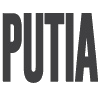In truth, they're one of those things - like the traditional Sicilian cart for instance - that are in fact quite recent. And yet they have become so much Sicilian in such a short time that it's like they've been here all along, fully part of our cultural identity.

L'Opra dei Pupi became what we know today only in the XIX century. The first pupari siciliani (Sicilian puppeteers) made a number of changes to the original puppets, adding chiseled armours and decorative details. This way, the pupi became the perfect "actors" of the ancient tales of the Carolingian Cycle and brought their adventures back to life and on stage. The values that we see portrayed by Charlemagne and his Paladins are loyalty, bravery in battle and thirst for justice, passions and feelings that were felt by a large part of the Sicilian society back then.
Roland is without a doubt the hero of the Opera dei Pupi, the ultimate Paladin, brave and loyal. With him, Angelica, the Oriental woman for whom he loses his mind, the Emperor Charlemagne, Renaud, Roland's cousin and romantic rival, Ganelon the evil traitor, and many more.

What brought - and still brings - this extraordinary show to life is the puparo. Without him, the whole Opera dei Pupi could not even exist: the pupo alone would be nothing more than a richly decorated wooden puppet. It's the puparo that gives it movement, voice and emotion, in other words, a soul. In the past, the pupari were often illiterate, but they knew all the stories by heart and could perfectly take them on stage: they could modulate tone, rhythm and voice exposition and were able to perform a number of different characters, men and women, good or bad (the art of the so-called cuntastorie - storyteller).
Today as much as in the past, this is what really moves the public, what gives pathos to the story, what really makes the pupi alive.
The Opera dei Pupi has been included in the UNESCO Intangible Cultural Heritage Lists since 2008. We traditionally recognise two main pupari "schools" in Sicily: the Palermo school and the Catania school. The main differences between the two lie in the size and weight of the pupo: smaller and more flexible in the former, bigger, heavier and stiffer in the latter. Each school is representative of a art that's passed on from father to son. There are whole families devoted to this practice: just to mention a couple of names - still active today - the Cuticchio Family in Palermo and the Napoli Brothers in Catania. But really, there are a number of families and different "schools" spread all over the island.

In the recent past, the Opera dei Pupi has been close to disappearing completely. As it's often the case with old traditions, it finds itself in constant danger of being forgotten or - even worse - changed forever. And yet, the pupari keep fighting to prevent this from happening and - also thanks to a renewed public interest - have managed to give it new life while preserving its authenticity.
It might be that the Opera dei Pupi has managed to survive until now because it has the power to represent Sicily's authentic spirit and the best of Sicilians themselves on stage. In that case, it's definitely a heritage we should keep close.
Cover Picture: palazzo.quirinale.it

